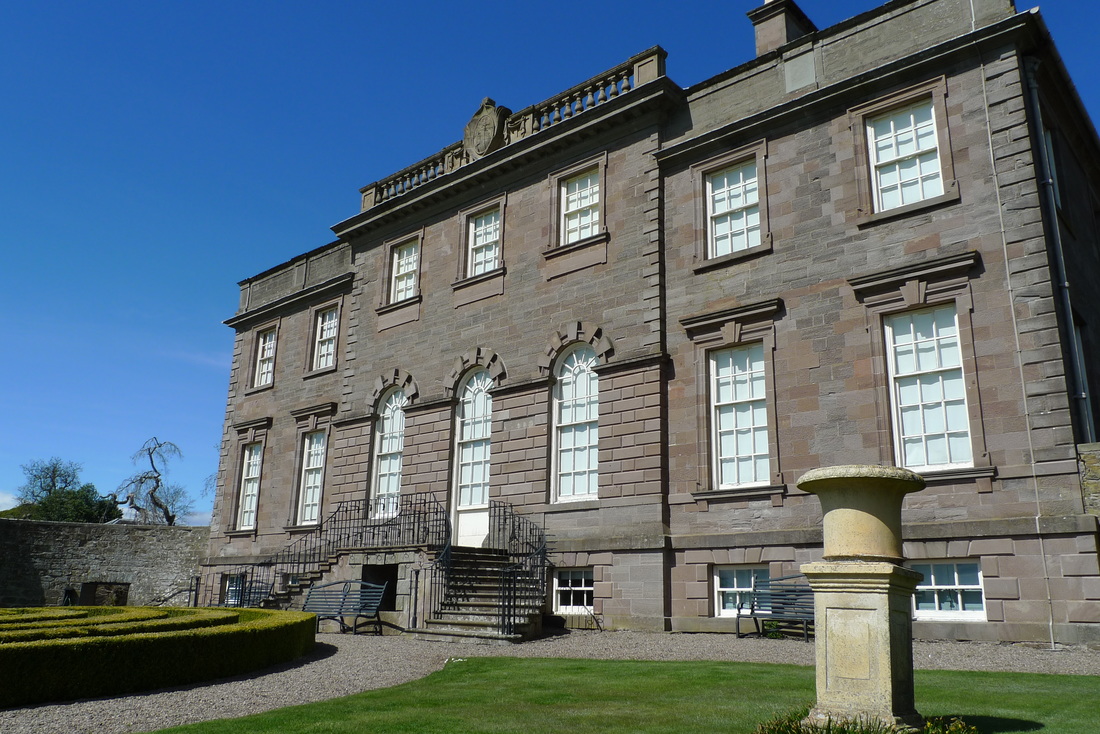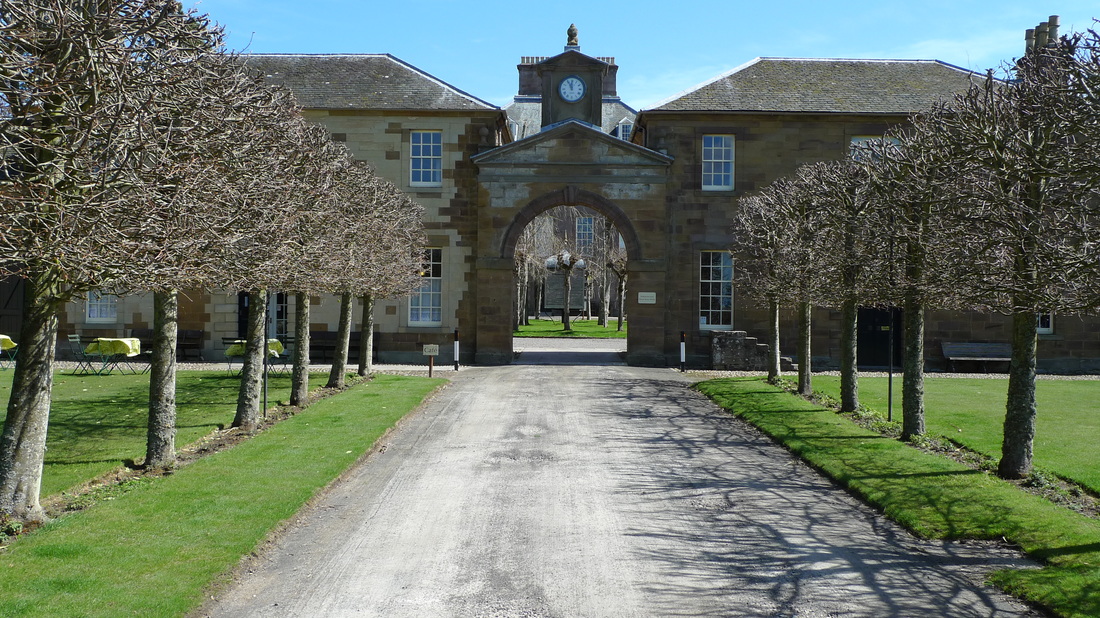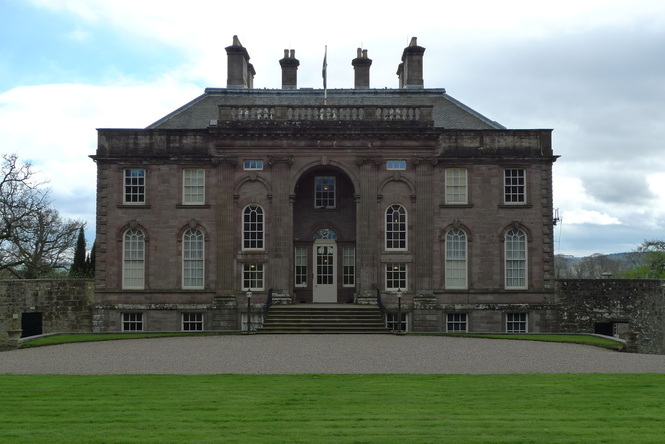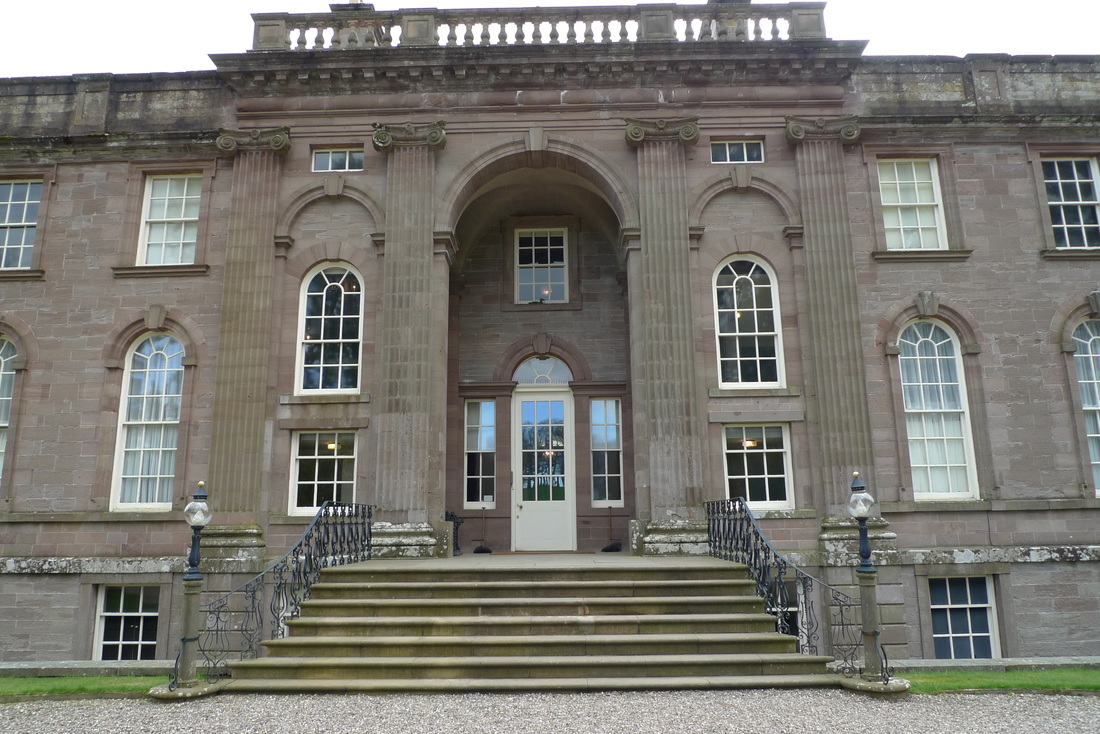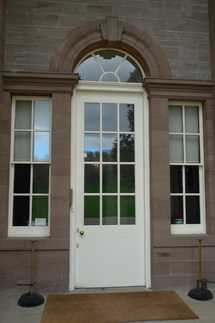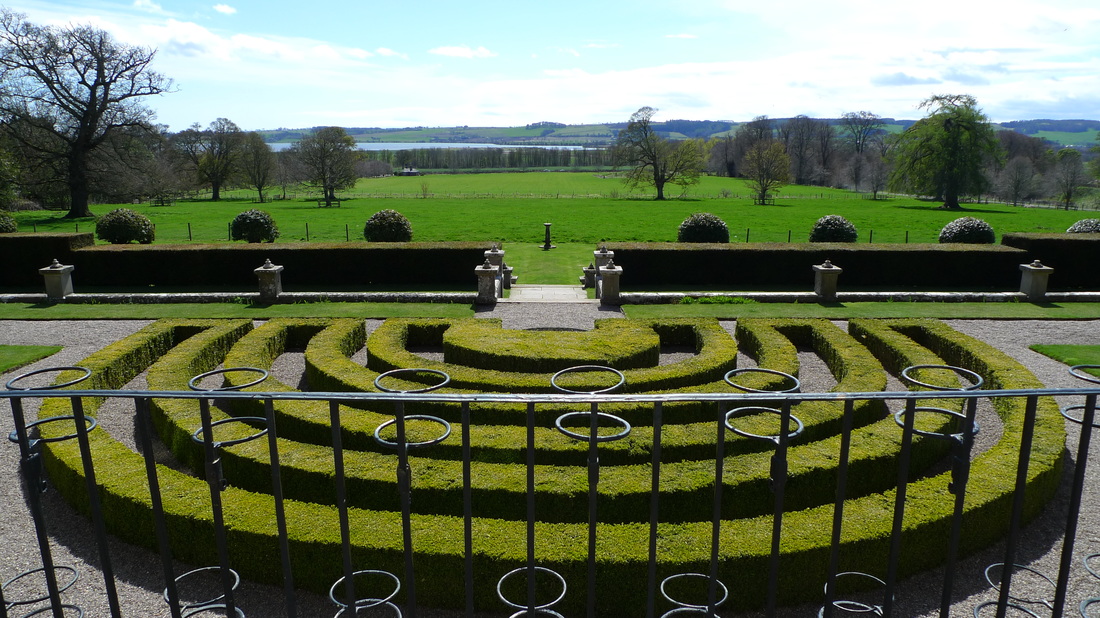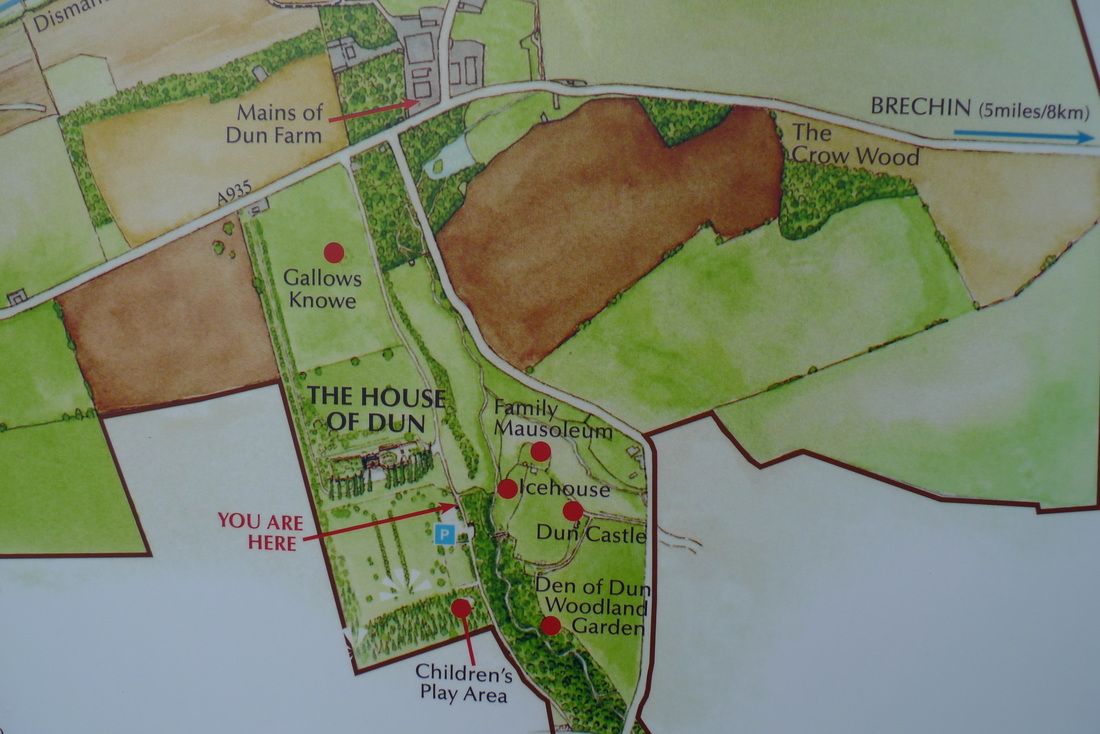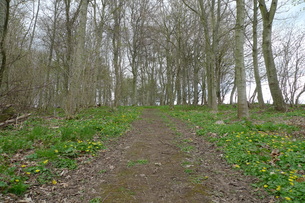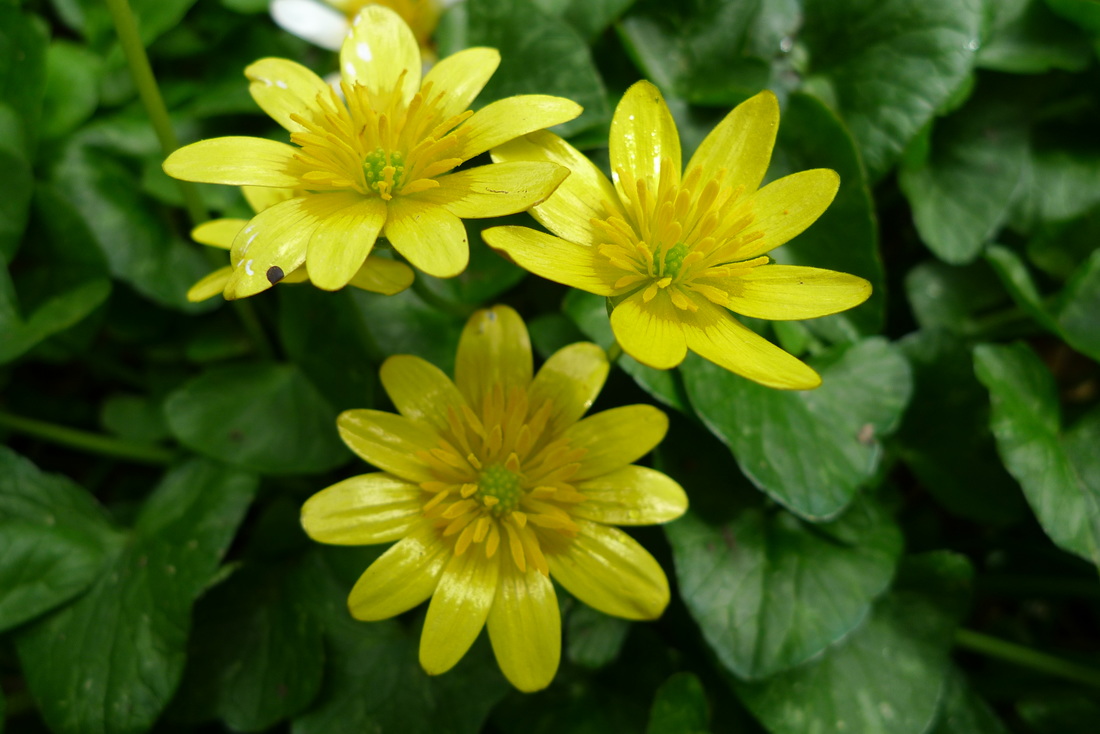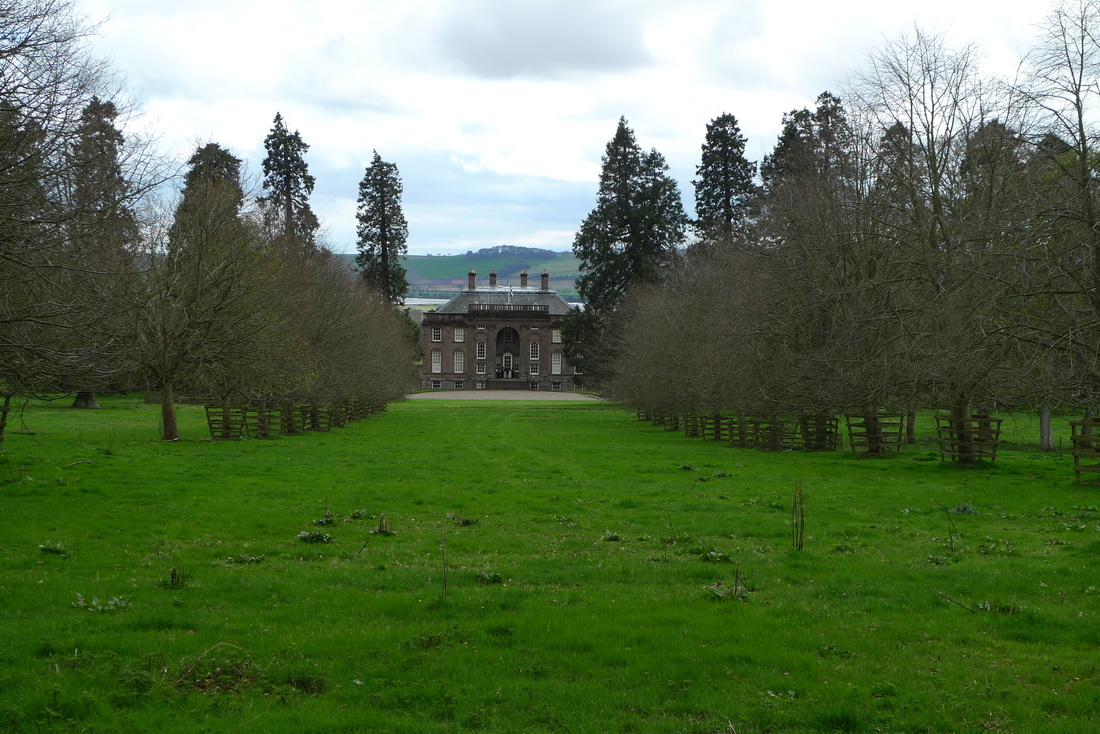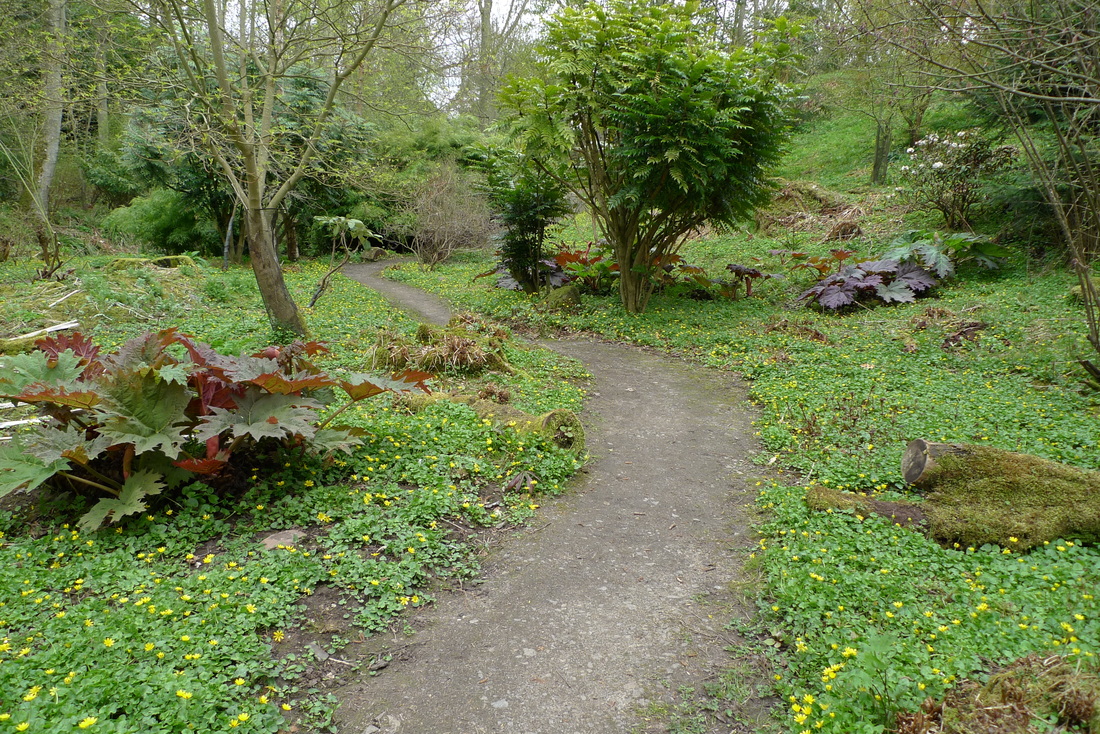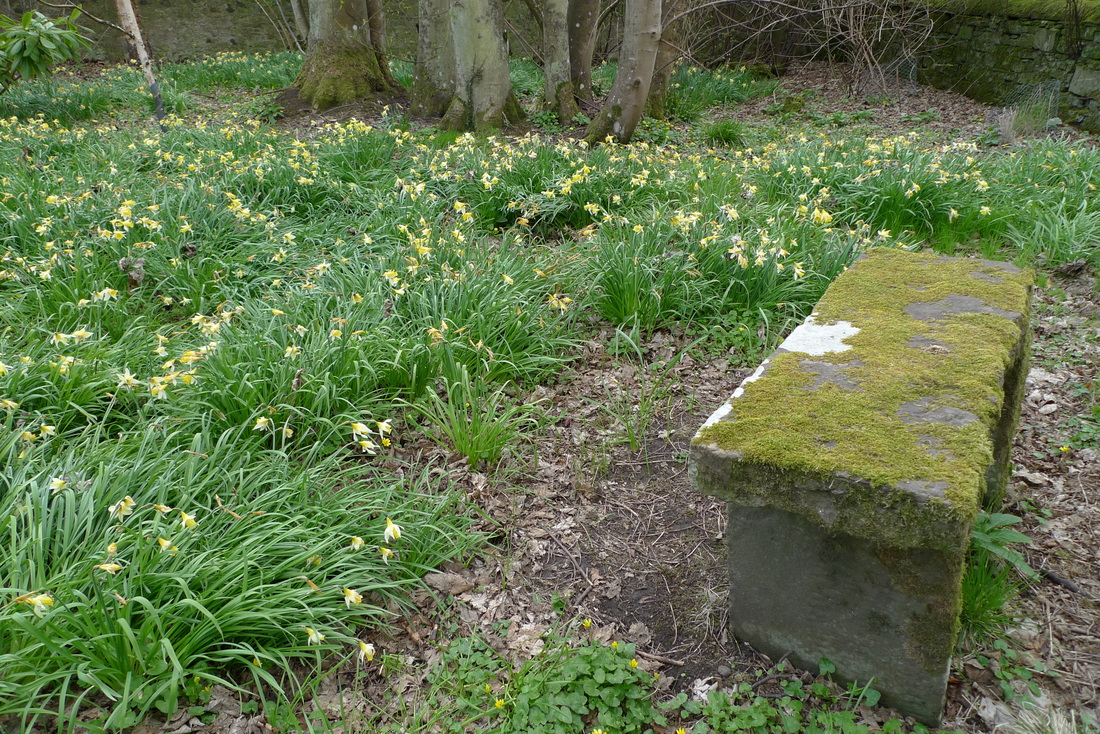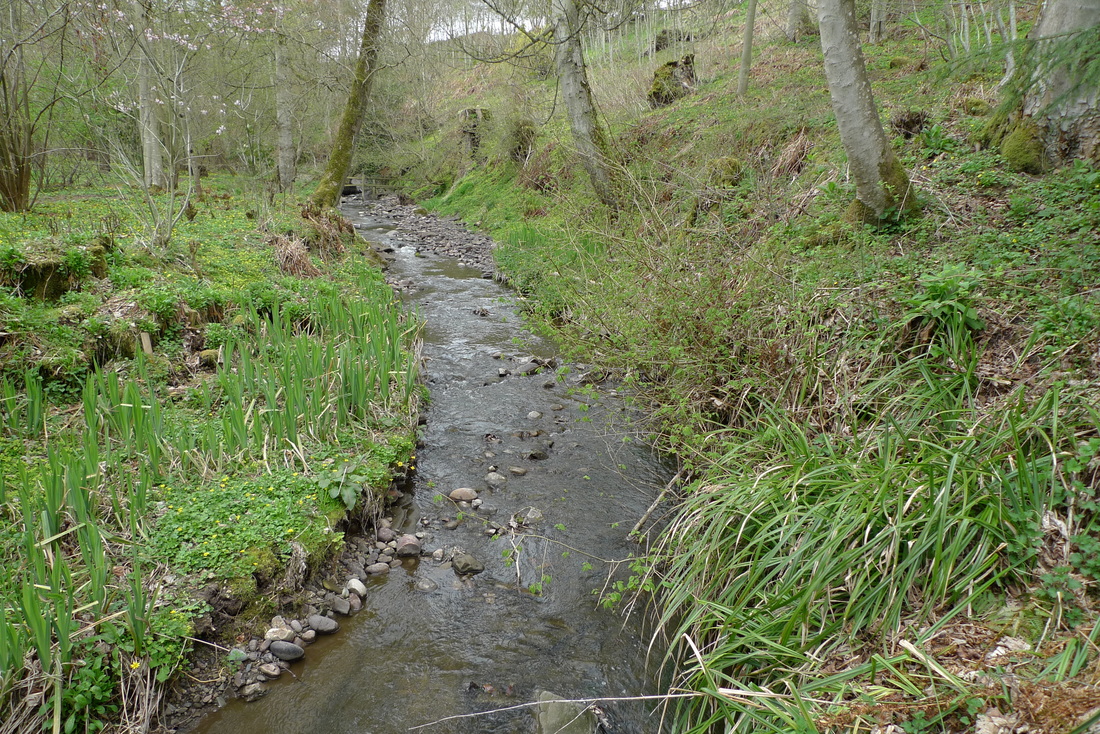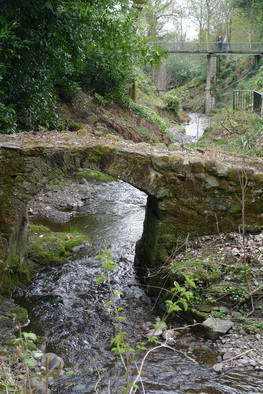|
Considered the finest home of this size to be designed by the renowned Scottish architect, William Adam, the House of Dun boasts stunning plaster ceilings, tapestries and extensive gardens to explore. You can reach it easily on a bicycle as it is less than 4 miles from Montrose train station.
You approach the house down a tree lined avenue. As you go through the archway into the courtyard look up and notice the maker's name and 'Paris' on the clock face.
This is unmistakably Georgian architecture, with perfect proportions and symmetry. Everything matches. The first floor has tall arched windows that let the light flood into the principal rooms.
William Adam, the celebrated Scottish architect, designed the house for the Erskine family. It was inspired by Chateau d'Issy near Paris. Adam had three sons who were also renowned architects and throughout Scotland you will find many of their buildings. The Adam Style was the name given to the integrated interior and architecture design that was practiced by the Adams.
The main door into the house is framed by four ionic pilasters and an enormous archway.
Silent Companion
The violin is not the only surprise in the house. There are also fake doors. The guide asked someone in my tour group to open a door in the hallway. There was a brick wall behind it. Some doors are simply there to create symmetry in a room. Those Georgians were so obsessed with symmetry that they were willing to spend good money on pretend doors! The house has the expected antique furniture, ornaments and 17th century Flemish tapestries, but I am more interested in the unusual. The 'silent companion', a wooden cutout of a child, is something I had never heard of before. The guide told us that when the Lady of the house was on her own in the parlour she could ask a servant to bring the 'silent companion' for company. In the servants corridor we stopped next to the bells, which had the names of the rooms next to them. Each bell had a different tone, so that the servants could recognise which room they should go to. The servants would not be able to read. The guide rang a couple of the bells to let us hear the different tones.
The house provides sweeping views towards the Montrose Basin, a tidal basin that is a home to many bird species.
The grounds and gardens are a delight to explore.
My favourite part was the woodland walk with twisting paths, pretty flowers and a river with bridge crossings. It is completely enchanting.
When I paid at the counter I bought some of 'Janet's tablet' to takeaway and dropped some coins in the Victoria bedpan they had for tips. I commented to the American lady that it looked like it was going to be a busy day in the cafe and she said, "I hope so, we do enjoy serving people."
House of Dun is a National Trust property and there is an entrance charge. The Caledonian Railway is a short distance away from House of Dun. You can ride on steam trains to Brechin. Read my blog about the railway. How to get there Take a train to Montrose. It takes around 1 hour, 40 minutes to 2 hours from Edinburgh or Glasgow, depending on which train service you travel on. It is a 3.8 mile cycle from Montrose station to House of Dun, so a day trip visit to the house is a possibility. The Montrose Basin Cycle Route will take you there, mainly alongside the A935 on a segregated path or on the pavement. The map shows the route to the Caledonian Railway and the House of Dun is marked with the castle symbol. The Montrose Basin Cycle Route is an excellent example of forward thinking by a local authority. The busy A935 makes it daunting to come here on a bicycle, but by making the pavement shared pedestrian and cycle path it has opened up the area to cycle tourism. Some parts of the pavement are very narrow with little space for bikes and people to pass, but they have made the best use of the existing infrastructure to ensure that it is viable to cycle safely in this area. Other things to see and do
|
Categories
All
Archives
July 2024
|

